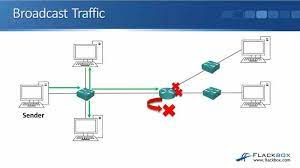Bandung, Telkom University - As soon as you complete your CCNA degree, you'll be exposed to a variety of unfamiliar networking terminology. The confusing part is that many of these terms are very similar. This section describes the differences between broadcast, multicast, and unicast at both the data link (Layer 2) and network (Layer 3) layers of the OSI model.
A broadcast is simply information that is received by all other devices on the segment. A broadcast is indicated by setting each bit of the address to the highest possible value. The maximum hex bit value is "f", so the hex transfer is ff-ff-ff-ff-ff-ff (or FF-FF-FF-FF-FF-FF, because uppercase letters have no effect) 16 Decimal value) . . The CCNA exam requires familiarity with hexadecimal conversion. So if you are unfamiliar with these conversions, familiarize yourself with them before taking the exam.
At Layer 3, a broadcast is indicated by setting each bit of the 32-bit binary string to '1', resulting in a dotted decimal value of 255.255.255.255. Each host in the segment receives such broadcasts. (Note that switches pass broadcasts, but routers do not.) Unlike broadcasts, unicasts are packets or frames destined for only one destination.
Multicast is somewhere between broadcast and unicast. If a broadcast is received by all and a unicast is received by only one host, a multicast is received by multiple hosts, all belonging to a "multicast group". Climbing the Cisco certification pyramid introduces multicast group creation and multicast traffic control, but you only need to track specific multicast groups for CCNA learning.
Class D addresses are reserved for multicast. The range is 224.0.0.0 to 239.255.255.255. Addresses 224.0.0.0 through 224.255.255.255 are reserved for use by network protocols on local network segments, and routers do not forward these multicast packets, just like broadcasts. (Packets with these addresses are sent with a lifetime of 1.)
As CCNA candidates, OSPF routers send hellos using the address 224.0.0.5, EIGRP routers send updates using 224.0.0.10, and RIP version 2 sends routes using 224.0.0.9. , should know to send updates. Both RIP version 1 and IGRP send updates.


